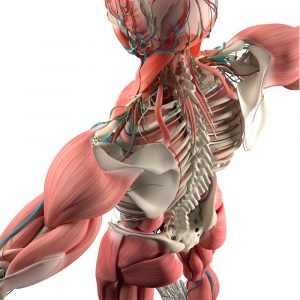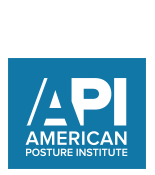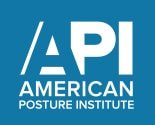
3-Step Ergonomic Makeover (That Won’t Cost You A Penny!)
Evolving Workplaces Are FUN-TASTIC And STIMULATING
Imagine if your workspace emulated the design of Google where you take a slide from meeting to meeting, you get fed for free in the lush cafeteria, you can relax in the nap pods, and even unwind and ponder your thoughts at the aquarium.
Maybe you prefer the AOL setup with vibrant colors, a game room, pool tables, and open workspaces?
Or perhaps the freedom of “working from anywhere” is what motivates you? You love the luxury of bouncing around from coffee shop to coffee shop, or working with a picturesque beach view.
Your Posture Is Your Greatest Work Resource
Whatever work style you prefer, don’t forget that you are bringing your posture with you! Whether you show up to Google, AOL, or your own business from the local coffee shop, the impact that your posture makes on your ability to produce efficient work is priceless.
Taking care of your posture is a great business investment. Upright posture is directly correlated with higher levels of alertness and productivity, helps prevent common work-related injuries, and improves health and longevity.
Upright posture is directly correlated with higher levels of alertness and productivity, helps prevent common work-related injuries, and improves health and longevity.
Why You Should Be Mindful Of Ergonomic Design
The term “ergonomics” is derived from two Greek words: “ergon,” meaning work, and “nomos,” meaning natural laws. “Ergonomics” is the study of people’s efficiency in their working environment, and “Ergonomists” study human capabilities in relationship to work demands.
Put simply, “Ergonomic Design” promotes better health at work, improves efficiency of task completion, and supports your best posture in the workplace.
You can’t afford to ignore ergonomics. Mindless work habits often lead to ergonomic injuries that disrupt the work cycle.
Workplace Risk Factors for Musculoskeletal Disorders
The Center for Disease Control (CDC) states, “Musculoskeletal disorders are associated with high costs to employers such as absenteeism, lost productivity, and increased health care, disability, and worker’s compensation costs. Musculoskeletal cases are more severe than the average nonfatal injury or illness.”
- Musculoskeletal Disorders: Musculoskeletal disorders account for nearly 70 million physician office visits in the United States annually, and an estimated 130 million total health care encounters including outpatient, hospital, and emergency room visits.
- Back Pain: The Bureau of Labor Statistics reported 372,683 back injury cases involving days away from work. Back pain is one the most common reasons for medical visits nationwide.
- Arthritis: The total cost for arthritis conditions is $128 billion! $81 billion in direct costs and $47 billion in indirect costs. Persons who are limited in their work by arthritis are said to have Arthritis-attributable work limitations (AAWL). AAWL affects one in 20 working-age adults.
- Carpal Tunnel Syndrome: The Bureau of Labor Statistics reported 26,794 carpal tunnel syndrome cases involving days away from work last year, representing a median of 25 days away from work compared with 6 days for all nonfatal injury and illness cases.
The Goal Of Ergonomics
The goal of ergonomics is to reduce stress and eliminate injuries and disorders associated with the overuse of muscles, bad posture, and repeated tasks. A workplace ergonomics program can aim to prevent or control injuries and illnesses by eliminating or reducing worker exposure to musculoskeletal risk factors.
- Awkward postures that add stress to the muscle and joints
- Repetition of uni-planar motions in the workplace
- Heavy material handling with improper lifting technique
- High force or mechanical compression from occupational tasks
- Prolonged exposure to vibration, such as the use of a jackhammer
- Temperature extremes that are too hot and/or too cold
- Glare, inadequate lighting, and poor vision
3-Step Ergonomic Makeover You Can Implement for FREE
You can’t afford to ignore ergonomics in your workplace any longer. You understand the importance, you aren’t denying the power of ergonomics to prevent injury and improve productivity, however the thought of buying one more thing for your business stresses you out!
Don’t worry we know how you feel. We’ve got ‘your back.’ Implementing this 3-Step Ergonomic Makeover is a great place to start with ergonomic design, and it won’t cost you a penny.
1. Tech Posture 101
Beat the decline of posture in the Digital Age with proper Posture Tech Tips. Here’s the deal: looking down all day at your phone or computer monitor is causing SERIOUS strain to your head, neck, and thorax. I mean, really serious.
Looking down all day at your phone or computer monitor is causing SERIOUS strain.
When the head juts forward in relation to the shoulders and the shoulders curl forward, this posture alone is related to:
- headaches,
- neck pain,
- migraines,
- jaw pain,
- balance disorders,
- developmental delays,
- carpal tunnel syndrome,
- and fatigue.
You can prevent forward head posture and shoulder anteriority by raising your device monitors to eye level. If you are reading this on your computer are you looking down, or if you’re on your cell phone is your neck flexed forward? Chances are you have forward head posture right now.
Simply place a book or a box under your computer monitor to raise it up to eye level. Your gaze should be at the top of the computer in your best posture. For best cell phone posture, bring your cell phone up to eye level as you scroll through social media instead of looking down.
These free tips alone are worth their weight in gold for the prevention of common musculoskeletal disorders associated with forward head posture.
2. Stand, Walk, and Move
Another free tip that you can’t afford NOT to do is to stand up to a seated society. While occupational tasks have evolved from being strenuous activities outside to seated tasks in doors, our society has become more and more (and more) sedentary.
Sitting is the new smoking, it is related to increased incidence of obesity, Type II diabetes, and cardiovascular disease. Sitting is so threatening it is shocking that we continue to do it day after day.
To offset the ill health effects of sitting, you need to:
- stand up often,
- walk around more,
- and make intentional movements.
You can invest in a stand up desk, which is a good idea, or as a free option you can place your computer on a counter that allows you stand comfortably and keep your eyes at eye level with the monitor. You can also create your own desk raiser with a box (ergonomic doesn’t mean expensive).
Walking and moving are also free. Making the choice to walk around and move more often is a good lifestyle habit that will pay back dividends. Start walking and talking by hosting business meetings on the go and taking work calls while pacing around the office. Always take the stairs, park further away, and walk to lunch or stand up while you eat if you brought lunch with you.
Find ways to implement more movement that make sense and don’t cost you a cent to implement.
3. Gravity Got You Down? Take Frequent Posture Breaks
As if work doesn’t get us down, we have the ever-present force of gravity pulling down on our bodies 24/7. This is why we find comfort in sitting and why we commonly roll our shoulders forward and flex the thorax anteriorly, resulting in a C-shaped spinal curvature.
Gravity is a big deal.
If you aren’t mindful of gravity, it will pull you down. Have you ever noticed that older people hunch forward and commonly say that they’ve lost height with age? This is an example of posture declining with gravity.
To resist gravity you should perform frequent anti-gravity Posture Breaks. A Posture Break is a 30-second stretch each hour to improve your posture and prevent anterior flexion.
To perform a Posture Break:
- bring your hands out to the sides,
- open your chest and push it forward,
- drop your head back, and h
- old the position for 30 seconds. You should feel a good stretch in the neck, pectorals, arms, and chest.
Frequent Posture Breaks are a Posture saver!
You, your employees, and your family can all implement this simple ergonomic makeover. The return on investment of proper posture in the workplace is priceless. Your body and your health are your greatest assets, and only YOU can take care of them.
Your body and your health are your greatest assets, and only YOU can take care of them.
Make the choice today to live healthier tomorrow. You bring your posture with you everyday to work, the choice is yours – you can have beautiful, healthy, productive posture or you can have weak, depressed, and sick posture. You know the right choice. Take the first three steps to changing your posture with the 3-Step Ergonomic Makeover and by also downloading accessing our Virtual Ergonomics Summit with the top leaders in the industry.
>> Access The Virtual Ergonomics Summit at 85% Off Today! <<
Reference:
Center for Disease Control and Prevention (2016) Work-Related Musculoskeletal Disorders & Ergonomics Retrieved from: https://www.cdc.gov/workplacehealthpromotion/health-strategies/musculoskeletal-disorders/




















